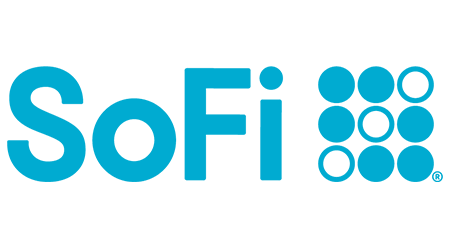
- 0.50% APY on checking balance
- Up to 3.80% APY on savings
- $0 account or overdraft fees
- Get up to a $300 bonus with direct deposits of $5,000 or more
The early 2000s brought a big change in Ecuador’s official currency, switching over from the sucre to the US dollar — the most accessible currency in the world. Known for the Galapagos Islands, the highest capital city in the world and some of the best surf in South America, Ecuador is a popular destination for backpackers, nature lovers and thrill-seekers.
Cash is your best bet for purchases in Ecuador, supplemented by a credit card. A travel credit card is your best bet for a travel credit card, as it charges no foreign transaction fees. ATMs are available in most major cities, but you can also pull out some cash and bring it with you for your outdoor adventures.



As a general rule, always plan to have cash as your first method of payment. Although Visa and Mastercard debit cards and credit cards are accepted in larger cities, such as Guayaquil, Quito, Esmeraldas and Manta, a lot of other places don’t have card payment options – so have some green in your pocket.
A combination of cards and cash is the best way to approach any overseas trip. You’ll need cash for most transactions in Ecuador, especially if you’re traveling down the coast. Whichever combination of products you take with you to Ecuador, be sure to spread your budget across a few different cards and always have some cash for emergencies.
But if Ecuador is only one stop on a South American vacation, think about how you’re going to spend money in other currencies during the rest of your trip.
If you plan on using a credit card when you’re in Ecuador, look for a card that doesn’t charge for foreign transactions like the Capital One VentureOne Rewards Credit Card (). You can use a your credit card to pay for flights and online bookings before or during your trip. Major retailers and restaurants in Ecuador also take cards.
Travel cards often allow you to earn miles on purchases and come with perks like statement credits or travel insurance as well. Review your travel needs and compare travel cards to find one that best rewards your jet setting habits.
Explore top debit cards with no foreign transaction fees and travel credit cards by using the tabs to narrow down your options. Select Compare for up to four products to see their benefits side by side.
The Finder Score crunches over 300 checking accounts from hundreds of financial institutions. It takes into account the product's monthly fees, overdraft fees, opening deposit, customer support options, ATM network and features — this gives you a simple score out of 10.
To provide a Score, Finder’s banking experts analyze hundreds of checking accounts against what we consider is the best option: no monthly fees, no overdraft fees, a large ATM network of 50,000 or more, additional features outside of typical banking services, and the optional perk of earning interest. Accounts that are nearly free to maintain and use are scored the highest, while accounts with costly fees and few features are scored the lowest.
The Finder Score is a simple score out of 10. The higher a savings account's score, the better we think it is for the average customer.
We score each credit card in our database of hundreds based on a data-driven methodology with 3 main criteria: Does the card offer rewards? Does the card have an annual fee? What's the card APR%?
Debit cards are accepted by few of the smaller merchants in Ecuador but can generally always be used for cash withdrawals from ATMs. Like credit cards and travel cards, debit card transactions are protected against fraud and unauthorized transactions.
The price of ATM withdrawals should be a significant factor in your comparison if you’re looking to apply for a travel transaction account. Some providers like Betterment Checking don’t charge international ATM fees as well, making them a good pick if you travel often.
Travel cards come with an additional, emergency card in case the first one is lost or stolen. A travel card can be used to make over-the-counter purchases and ATM withdrawals in Ecuador. Note that the Ecuadorian bank or ATM operator may still charge a fee when you withdraw cash even if you have a card that doesn’t charge a fee for international ATM withdrawals.
Also remember that the currencies of other popular South American destinations such as Colombia, Brazil, Peru and Argentina can’t be loaded on any travel card. If Ecuador is only one stop on a bigger trip, you may want to consider one of the other types of travel money products as well.
Cash is king in Ecuador, which means you’ll need to have US currency on hand to pay for things at most places. If you want to limit the amount of cash you have on hand for security purposes, make sure you have one or more cards that you can use to withdraw cash from ATMs while on your trip.
Security is the main advantage of using traveler’s checks. Each check has a unique serial number and can only be cashed with photo identification. Fees are the main disadvantage.
Banks charge you to get check and to cash them. You’re better off using a debit or travel card which lets you make cheap or free ATM withdrawals.
Ecuador began to us the US dollar as its primary currency in 2000 when it replaced the Ecuadorian sucre.
If you’re travelling from Peru, Colombia or Brazil and you have sols, pesos or reals, you can exchange the money to US dollars at some restaurants and hotels. You may not pay a commission on the transaction, but the rate will be much worse than what you can get a bank.
No need. Ecuador uses the US dollar, so you don’t have to do much before you leave the country — but bundle up your greenbacks. There are no restrictions to the amount of cash you can bring with you to Ecuador.
There are many ATMs in Ecuadorian cities and key tourist destinations if you run out of money. ATM withdrawals may be subject to the Visa and Mastercard international exchange rate, which is often better than what you can get exchanging money in other ways.
ATMs in Ecuador are plentiful in the major cities, though you’ll want to stock up on cash before traveling to more remote areas. A debit card that doesn’t charge international ATM fees, like one from Betterment Checking, is a good choice.
Less expensive than neighboring Brazil or Colombia, Ecuador is a budget South American vacation destination. This means you can travel through Ecuador on a small budget. However, Ecuador can deliver a five-star experience as well — especially in Quito. All prices are in US dollars.
| Quito | Budget | Mid-range | Expensive |
|---|---|---|---|
Accommodation | Hostel $5–$10 per night | 2-star hotel $10–$50 per night | 5-star hotel $50–$150 per night |
Meals | Empanadas $1–$2 | Ceviche $5–$10 | 5-star restaurant $20–$40 per dish |
Activities | Walk around the old town free | Visit the balcony of the Basilica del Voto Nacional $1 | Guided tour of Otavalo Marketplace with lunch $50 |
Prices are approximate and are subject to change.
Peter recently backpacked across South America. He visited Colombia and traveled to the south of the continent. He started his trip in Esmeraldas, continued south to Guayaquil, Montanita and finally Quito before traveling to Peru. Peter spent one month in Ecuador in total.
Do you have any travel money tips?
How to pay, how much to bring and travel money suggestions for your trip to USA.
How to pay, how much to bring and travel money suggestions for your trip to New Zealand.
How to pay, how much to bring and travel money suggestions for your trip to Thailand.
How to pay, how much to bring and travel money suggestions for your trip to Vietnam.
How to pay, how much to bring and travel money suggestions for your trip to Mexico.
How to pay, how much to bring and travel money suggestions for your trip to Portugal.
How to pay, how much to bring and travel money suggestions for your trip to Germany.
How to pay, how much to bring and travel money suggestions for your trip to Canada.
How to pay, how much to bring and travel money suggestions for your trip to Japan.